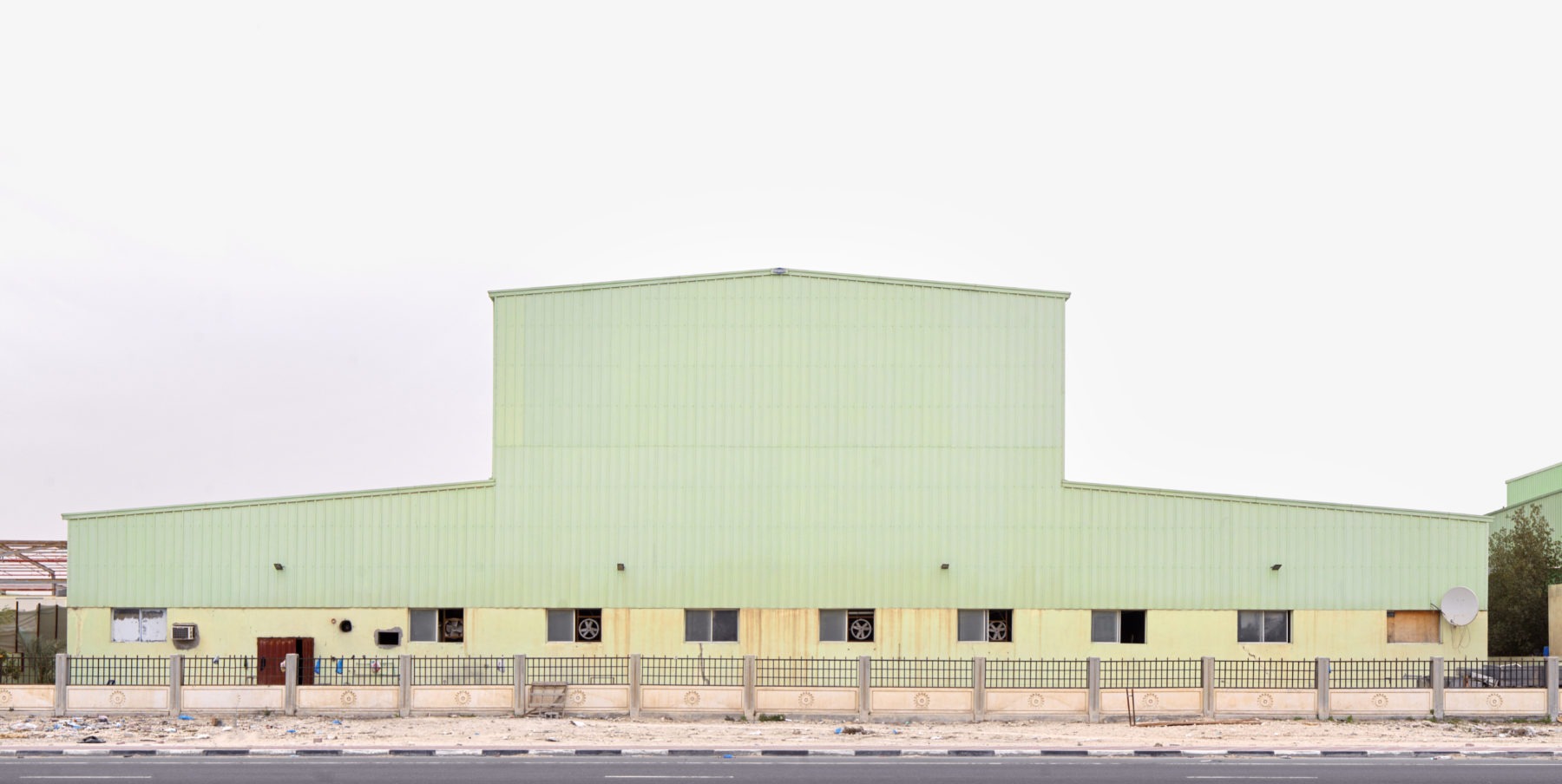
The images of the New Industrial Area reveal a beauty that may not be immediately obvious to anyone visiting the neighborhood of warehouses, workshops, garages and storage facilities nestled at the edge of town. Shades of pinks and greens on the canvas of an overcast gray sky pop out and intrigue the audience to know more. This is a “very personal project,” Elblaus says. One which he describes as “a way for me to translate my views of architecture, and me as an individual reflecting my place in Doha.”
In the following lines, Markus Elblaus explains how this personal project that documents Doha’s architectural landscape in an unexpected location that “just begged” to be captured, came about:
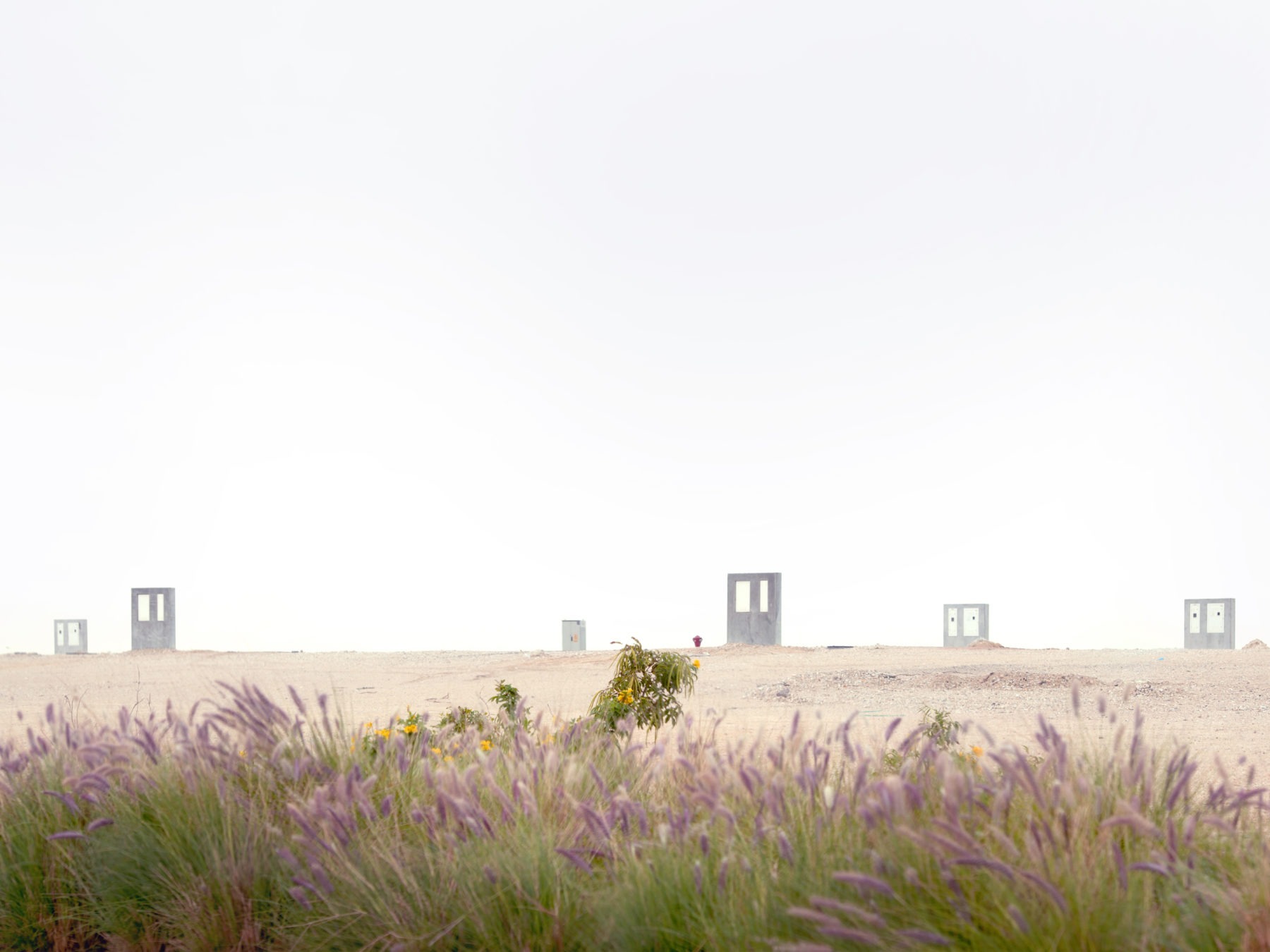
It is, rather, a very functional part of the city that fulfills a purpose – and I find that very intriguing. When I arrived in Doha 15 years ago, it was trying to re-image itself to create an identity – think of the perfectly curated and glistening towers of West Bay and the Pearl and so on. And, I always felt there is a conflict between the image that perhaps is the official branding of Doha and what you actually see when you live there. As a resident, the Industrial Area is a necessity. That’s where you go to get anything done – to fix your car, if you want new majlis cushions, or you need piping for your yard.
It is like the drawer in your house where you put everything that you find useful, but you don’t necessarily have a dedicated space for. Maybe they’re items that you don’t want to have in the open, or for people to see. Anything from a cloth to wipe your glasses, to the keys to the backyard and the tickets for the water cooler refills – all of these things get crammed into one drawer — the Industrial Area is a little bit like that. It’s where the city of Doha has placed everything that you need, but you don’t perhaps want to look at it all the time.
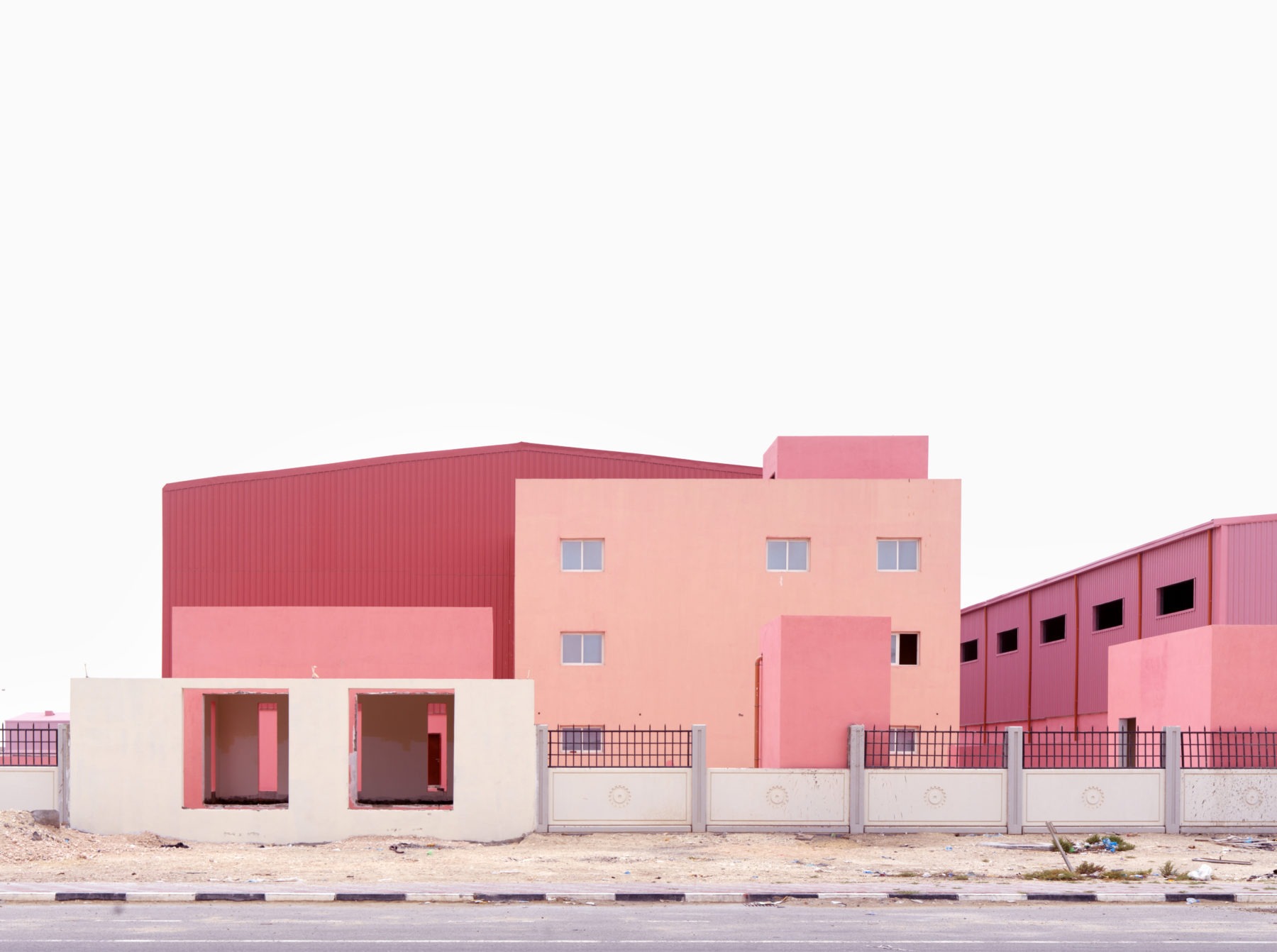
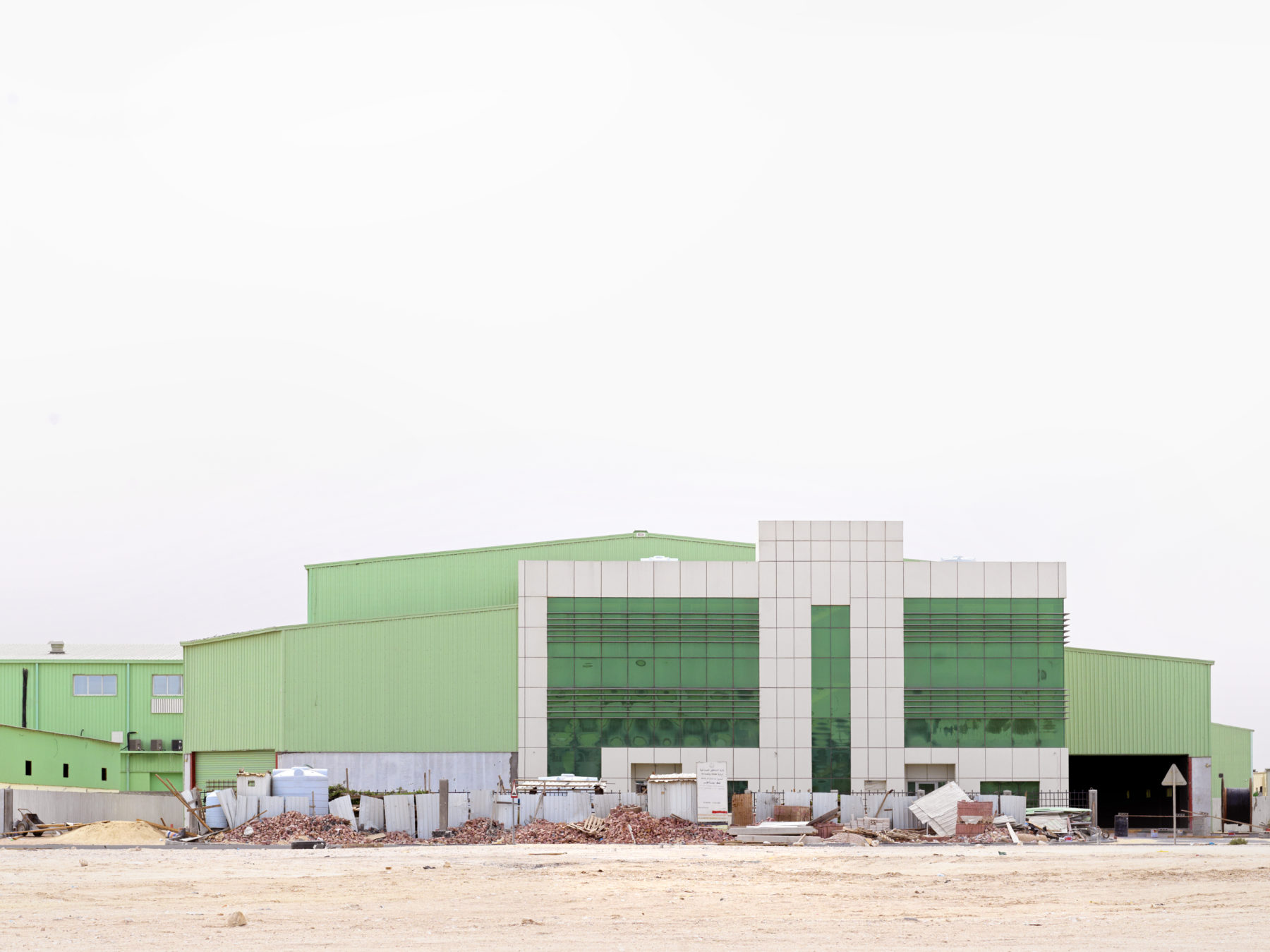
I go out to take photographs when the weather is overcast – it is a very small window of opportunity in a country where the sun is almost always shining. I do this to get uniform lighting situations of all the buildings.
The light gray sky enhances the shape and the color of the object, taking away any disrupting elements. I attempt to capture the building as neutral as possible. And in doing so, I also find it to be the most beautiful picture, the neutral photograph, the one that doesn’t include anything but the subject matter. That in itself creates a minimalistic beauty that I find very soothing and relieving.
The energy I’ve captured in these photographs is also a juxtaposition, a stark contrast of the energy and the life of the Industrial Area itself. It’s a busy place. It’s a massive place. It’s a somewhat dangerous place. It’s also a place where people work really, really hard. In contrast, the photographs I create of the place are very still, quiet and formal. I find that energy very interesting.
I like to see beauty in some things that perhaps are not meant to be beautiful – the mundane, the everyday, the gray, the beige, the white. It is, for me – soothing. It’s beautiful. Perhaps it’s a cliche, but maybe as a Scandinavian, I have a more minimalistic approach to my surroundings, and so I find myself most attracted to surroundings in Doha that I find speak to me in that way. Of course there are also the lavish and luxurious surroundings, the falcons that also reflect the local identity, but I find the beautiful in the mundane surroundings as well, and I see them as beautiful because of my heritage – being partial to modernistic, minimalistic aesthetics.
While I work professionally, making a living as a photographer, I also have side photography that is just for me, where I scratch the itch of producing images that I want to see, that I felt were important for me to take – and these New Industrial Area photos are part of that.
It’s because I find the city of Doha to be under-documented. Things change so quickly; the urban environment is constantly in flux. The areas that are being knocked down, especially in the older parts of Doha – where there was an older history, heritage and identity – are disappearing. I think it’s important to try to document those before they go, because it’s a big part of what Doha is and what has been the foundation for most people living here. We have all been a part of that structure, we have all taken a much-needed trip to the Industrial Area, and these aesthetics are important to document as well. It is a very interesting place for me. I just can’t help myself taking those pictures.
However, this collection of photographs remains a little bit hard for me to use. I end up in a situation where I, as a white Western male, feel uncomfortable trying to tell a story that should be told by the people who actually live and work there. It’s a thin line between documenting something that you are a part of, and the documenting of other people’s lives and experiences. It’s this colonial photography trap that I am very weary of falling into.
Living in Doha for 15 years, I don’t feel like I’m just an expat running around, taking pictures. I feel that I’m documenting a city where I’ve been living, where my son has been born. For me, it is home. I’ve invested a lot of time here and I appreciate it very much.
Often, the problem for us expats is that we feel we are neither home, nor away when we live in Doha. And, I feel it’s important to take some responsibility for the place. These photos remind me how I feel at home in the most boring parts of Doha as well as in the most luxurious parts. I actually have a great deal of feelings of belonging here, even though I wasn’t born here, even though I’m not a local, but because I’ve been here for so long.
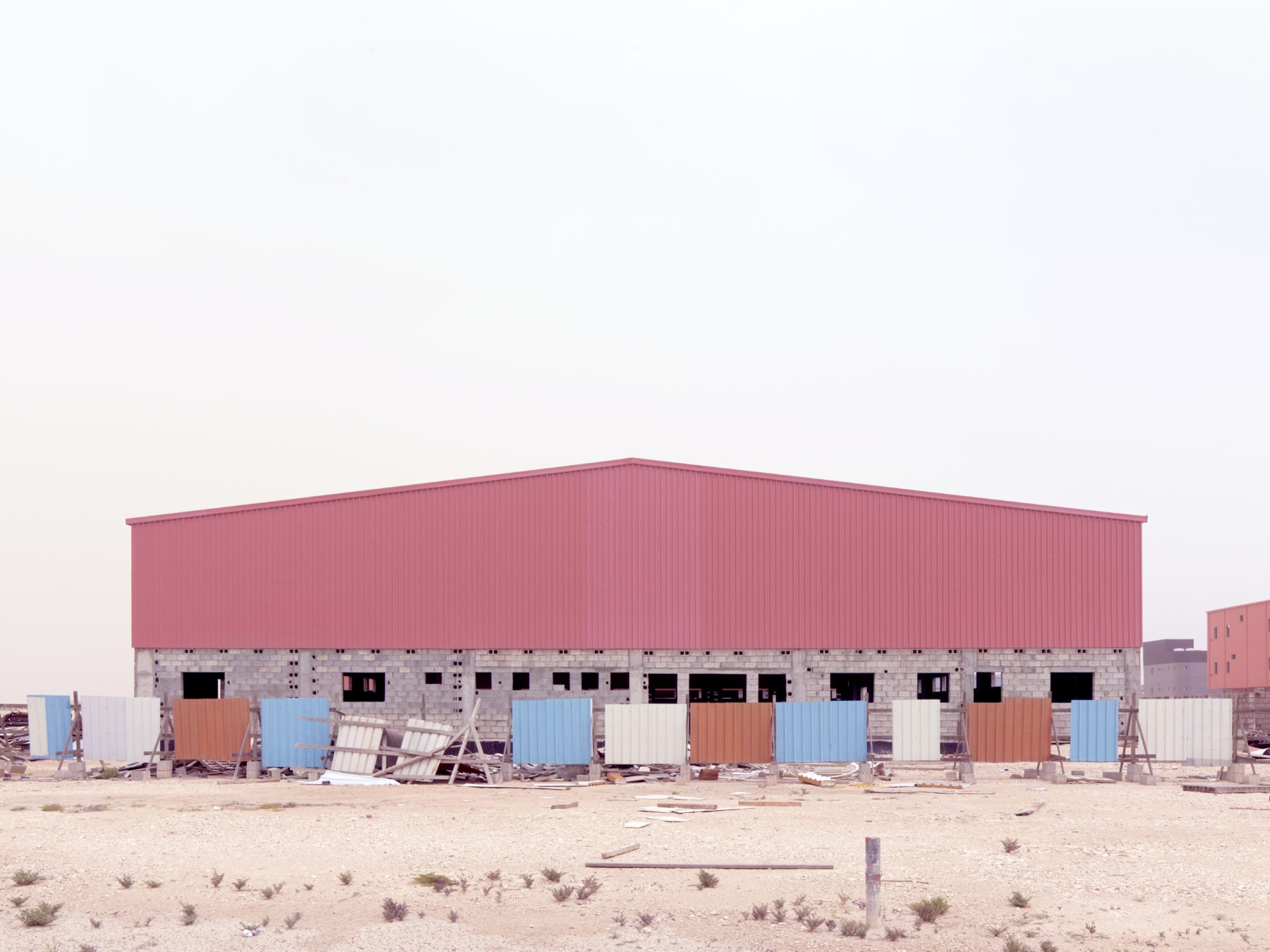

@markus.elblaus
Markus Elblaus is a Swedish photographer living in Doha since 2007.
Holding a degree in fine arts from the University of Gothenburg, School of Photography, he works as a professional photographer with a special interest in documenting architecture and, in particular, Qatar’s ever changing urban landscape. Markus sees beauty in the mundane and his style of photography can be described as straightforward and minimal with a play of symmetry.
He is deeply inspired by the artists Bernt and Hilda Becher and their work documenting industrial structures in Germany. Markus’ love for the sublime colors in the Qatari landscape; tones of gray, beige, and shades of pink moving towards orange, is a genuine passion and he considers this place to be one of the most beautiful on earth.